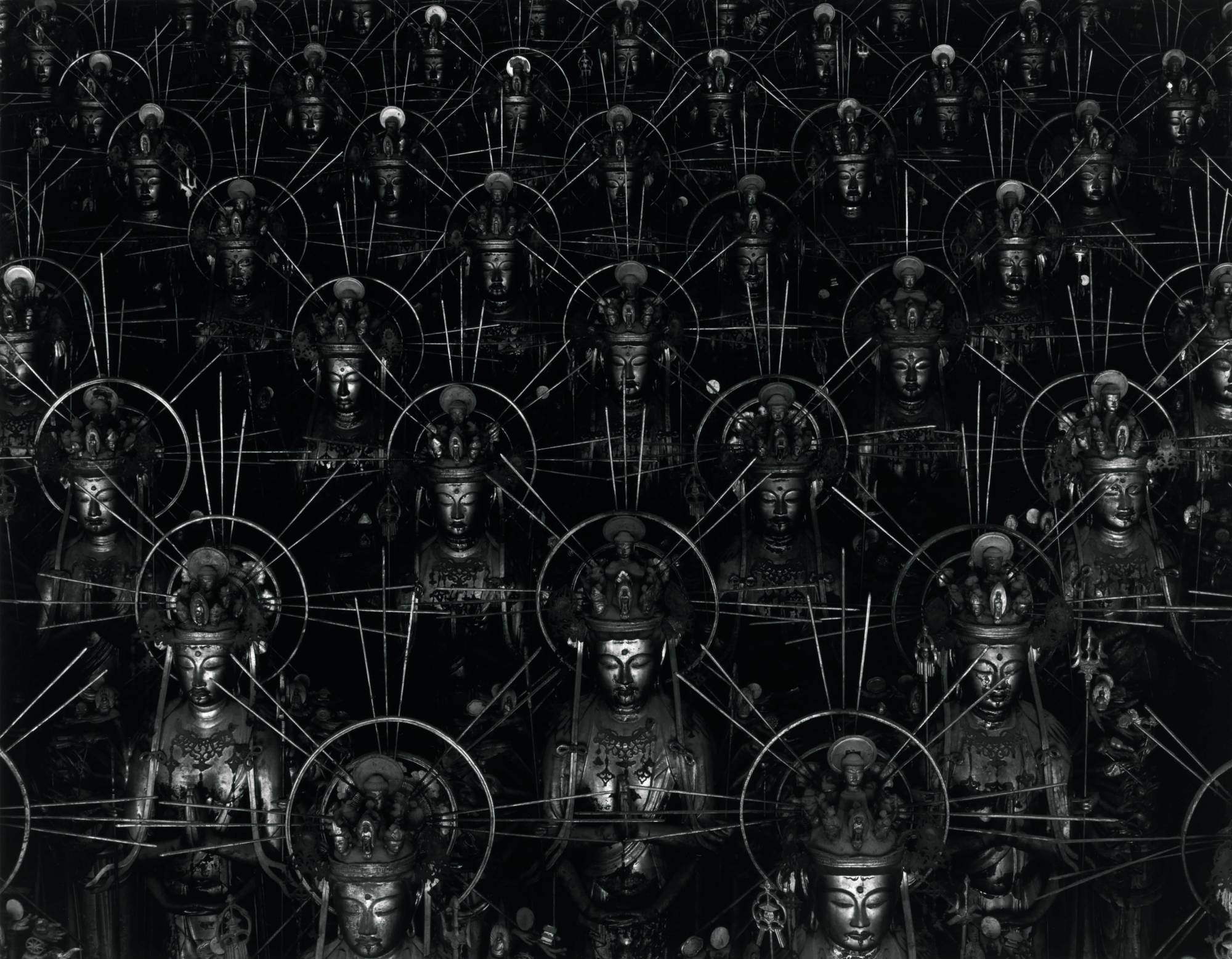The much-delayed reopening of the newly minted Kyoto City Kyocera Museum of Art (formerly the Kyoto Municipal Museum of Art) has arrived. With the refit and new additions of the museum completed, the inaugural exhibition highlights the antiques dealer-cum-internationally acclaimed photographer Hiroshi Sugimoto in “Hiroshi Sugimoto: Post Vitam.”
It is a selective career overview, accompanied by archaeological artifacts from Sugimoto’s personal collection, including new works such as the “Opticks” color series based on Isaac Newton’s prism experiments, and “Glass Tea House ‘Mondrian’” (2014), an installation not previously shown in Japan. If there is a particular thrust to the show, it is that we live in decadent but increasingly apocalyptic times, and therefore the spirit requires recultivation.
Sugimoto’s artistic career is awash in references to religion, especially the Buddhist paradise, Western Pure Land, which is believed to be the final destination of the soul. Indeed, he views his cumulative artistic output as a Buddha-in-the-making. The current exhibition is staged to evoke a temple setting as the museum site was once home to a cluster of temples sponsored by the cloistered Emperor Go-Shirakawa (1127-92).



